How One Man’s Journey to Becoming a Tree Parent is Growing a Forest and Inspiring Others
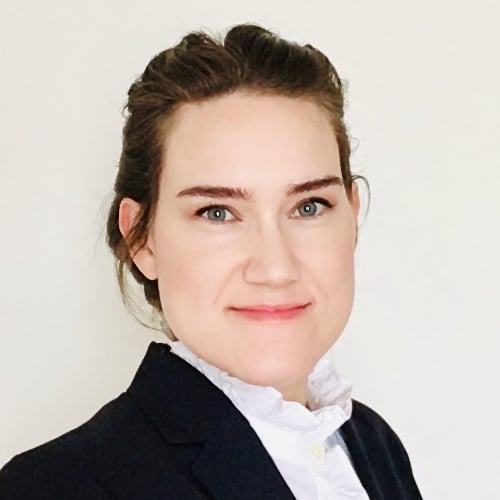
Walking on a meandering grass trail at the edge of a crop farm in Chester County, Pennsylvania, Tom Best and Calen Wylie marvel at rows of sycamores, hackberries, and oaks standing 30 feet tall, reaching for the bright sky. The seven acres of woods thickly outline the East Branch of White Clay Creek, protecting it from pollution and a warming climate and creating habitat for fish and other wildlife. When Stroud Water Research Center planted the trees as part of a flood control project seven years ago, the stock averaged a mere 18 inches.
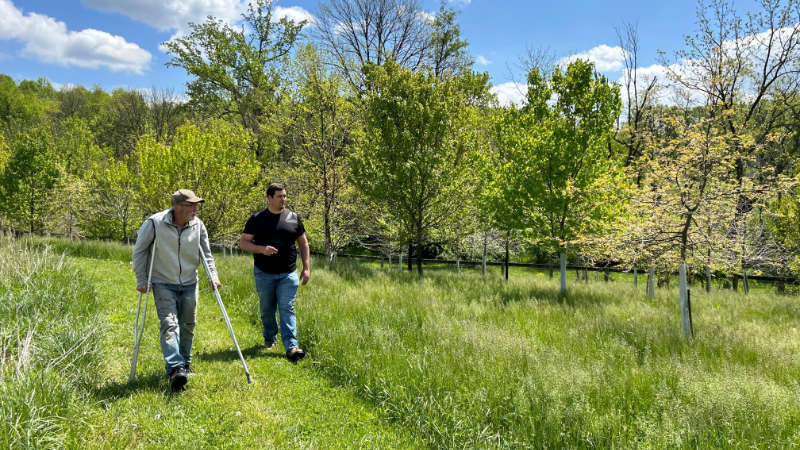
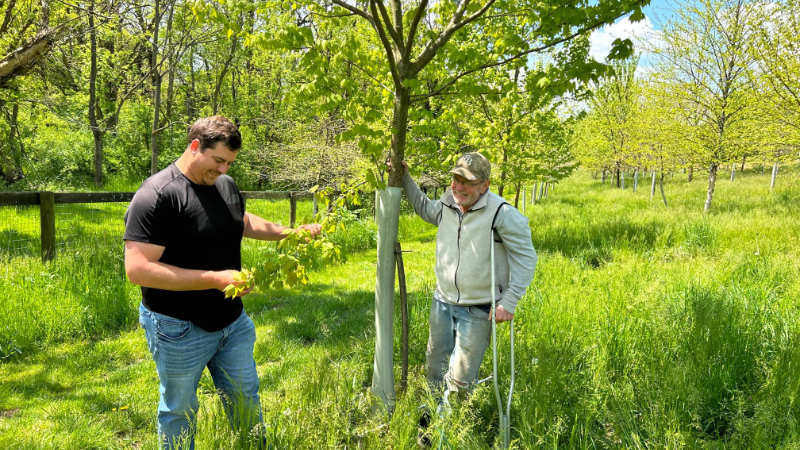
The impressive growth may be credited, at least in part, to the tender loving care provided by volunteers. Best and about a half dozen other volunteers have maintained the trees since they were planted.
Like any good parent, Best provides daily care, repositioning wayward trees and guiding them into adulthood. He removes debris, mows the walking trail, and until recently, he mowed three times a year around the trees, keeping multiflora rose and other weeds at bay.
The other volunteers weed-whack and spray herbicide.
The trees are now big enough and strong enough to need less maintenance, but Best still enjoys a daily half-mile stroll with Rico, his rescue dog from Puerto Rico, to check on the growing forest and get some exercise.
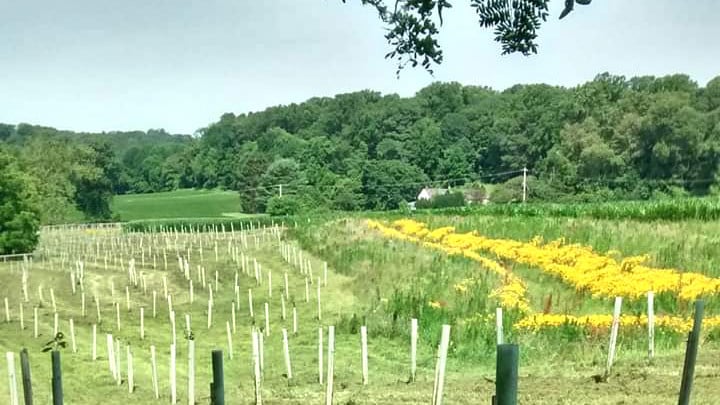
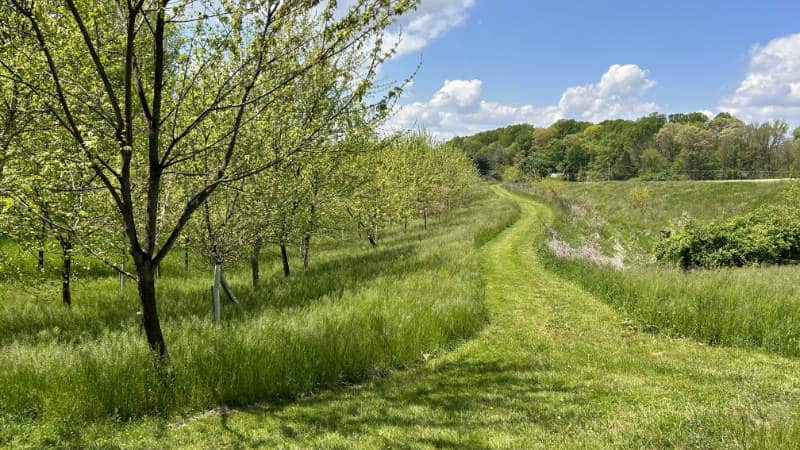
“The other day, I got so excited because we heard a meadowlark,” says Best. He’s an amateur birdwatcher and likes using Cornell’s Merlin Bird ID app.
At 71, he doesn’t move as easily as he once did. A broken back has made sure of that. Still, he is determined to care for the woods, aided by crutches and a four-wheeler, and of course, Rico.
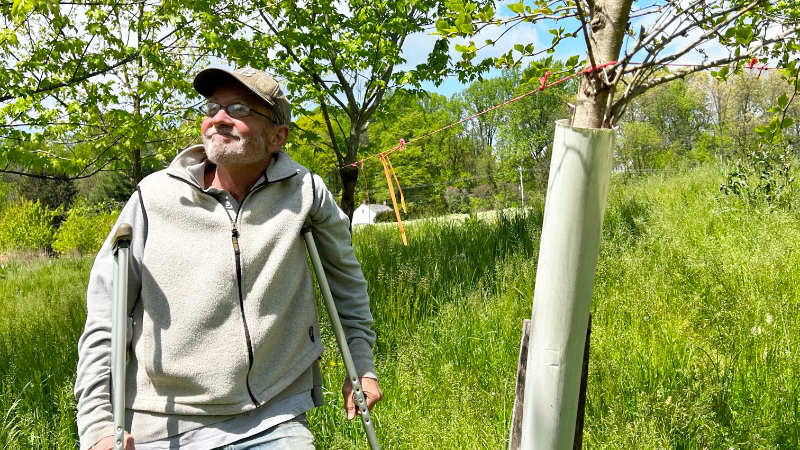
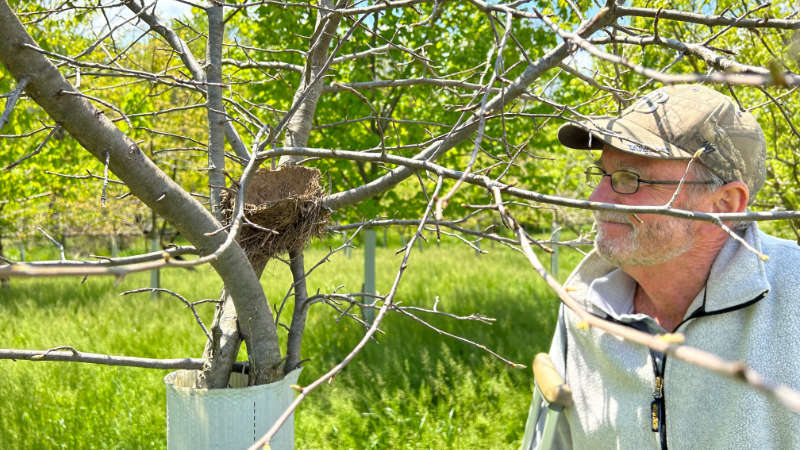
The work is pleasurable and perhaps instinctive for Best, an Eagle Scout and the son of a tree surgeon.
He recalls, “I grew up on a farm in Westtown, and all I ever wanted to do was be in the woods. I’d ride my pony all through the woods. Back then there was nobody around.”
Best channeled his love for the woods into education. For 18 years, he was a teacher at Upland Country Day School and ran a summer camp near the property where he’s been caring for trees. Some of the children, now middle-aged, reminisce with him about the days they spent hunting, fishing, canoeing, and camping, saying things like “Remember when we’d chew on sassafras?” He says many chose careers in environmental science.
“It’s very rewarding for me,” he concludes.
He later led similar activities for groups of up to 300 students from the Kennett School District.
He doesn’t own the young forest he maintains each day. For him and the other volunteers, who are all members of the Watershed Sporting Club, it’s an act of service, and one that fulfills environmental service hours that are a requirement of club membership. Best, who learned to hunt at 16, started the club nearly 40 years ago.
The 42 members also perform volunteer maintenance tasks for The Willowdale Steeplechase in service of the local equestrian community, and they donate some of the club’s funds to local nonprofits.
He says, “I chose that name, Watershed Sporting Club, because of our commitment to the environment down here. It’s a special group of men and women who hunt out here. They have a parental feeling toward the woods.”



